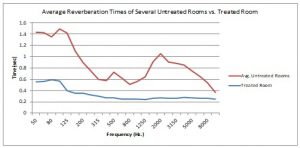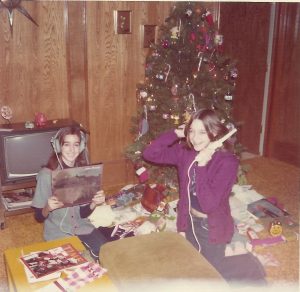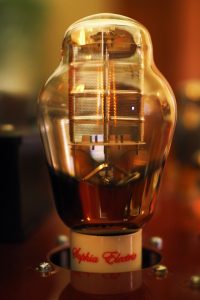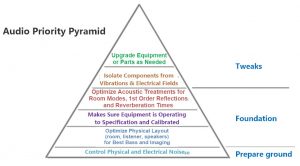
Roger Skoff agrees with Porgy and Bess's character Sportin' Life about some Hi-Fi issues
Nostalgia is a wonderful thing. It allows us to recall, honor, and enshrine the most cherished parts of the past while overlooking the less pleasant ones entirely. To the mind's eye (or to the ears of some audiophiles), the past is paradise. Only the good seems to survive for those who have experienced it (or think they have), and for those who haven't and will never be able to compare what it was really like with what we have today, it becomes an unassailable bastion of perfection—always to be admired and never to be equaled.
We have lots of nostalgia in HiFi: From "shaded dog" LPs, to iconic past performers and performances, to horn speakers, to tube electronics, to analog versus digital recording, to any number of other things. Many of us seem to have fallen into the habit of blindly assuming the "the good old days" were really the better old days, and that, whether as to the music itself, or to the gear we play it on, they're lost and gone forever.
Nonsense!
For one thing, if everything in the past really were better, why did we ever leave it behind? Why did we move on to the new music and the new technology that replaced it? There is progress, and things do get better over time as science advances and new technologies are developed and perfected to put its discoveries to use.
There are times, though, when that may not seem to be the case. One good example of this was when the first solid-state electronics were introduced to the consumer market back in the 1950s (HERE). Frankly, while electronics could be made smaller, lighter, cooler-running, and more easily portable, they were often more expensive, and early solid-state HiFi wasn't of the very best sound quality. It took more than a decade before solid-state HiFi started to sound as good as its tube competition, and even then, some transistorized circuits still had a residual tendency to hiss, limiting both their available signal-to-noise (S/N) ratio and their audiophile appeal.
CDs, introduced in 1982, were another theoretically advanced technology that, despite its immediate claim of "perfect sound forever," took years to effectively supersede its predecessor technology—the LP vinyl record. And even now, while CDs are being replaced by streaming (a still newer digital technology), ever-increasing sales of LP records, analog tapes, and tape recorders are ample proof that LP records and analog recording technology are still preferred by many people.
Hi-fi isn't the only field where technological advancement may be real but not immediately self-evident in every aspect. Consider, for example, the cars and airplanes of early in the last century: both were self-propelled vehicles; both were powered by internal combustion engines; and both had the same basic task of transporting people or things from one place to another. Looking back at them in 1910, for example, we can immediately see that, by most standards—whether features, detail, comfort, quality, or sophistication of manufacturing technology—the cars of 1910, twenty-four years after the invention of the automobile in 1886, were the more mature technology, and were vastly more advanced than the airplanes (invented in 1903) of that same year. Even so, the planes could fly and the cars couldn't!
Even when a technology is truly advanced, there may still be a time when a more mature, but less theoretically perfect technology can provide better real-world performance. This can either be because those who are using the new technology haven't yet learned the best ways to use it or the best things to use it for, or it may simply be because the two technologies invite different standards of "better."
Digital technology tends to be better than analog for recording or playing-back big (high amplitude, high bit count) music—the full tutti of a symphony orchestra, for example, or even an atomic bomb blast! (Yes, somebody really did record one once, on a test disc that warned buyers against potential equipment damage from playing it. No, I don't remember the name of the disc.)
Analog, on the other hand, because it suffers none of the "stair-step" distortion that can be typical of digital recording and playback at very low bit counts, is better for recording and retrieving just the opposite—such tiny details as the fifth bounce of the music off the back wall of the concert hall, for example, or the silent but music-filled physical space between rows of violins. The one that will be better for you depends on what sort of music you listen to, and what, in the process of listening, you listen for.
Another thing about new technologies that should be borne in mind is that, in almost every case, they will, once introduced, be driven in two directions: both better and cheaper. As with analog sound, some of its manufacturers will be driven to carry the technology to the greatest level possible. Development and refinement will become key words for them and, where it's possible, great things will happen, with some designers and companies taking the lead and others following their lead or falling behind. That's why the performance of modern CDs or CD players (or any other digital sound source, for that matter), far exceeds those of anything from 1982. Like the LP, digital home audio is now a mature technology, and has had nearly forty years to find out what works best and what doesn't.
As a technology becomes more developed, it's also possible for it to become cheaper—either because of economies of scale in a growing market or because of competitive pressures to sell something "a little less good for a little less money." Either or both of those things can happen, as witness the prices of television sets and computers over the last many years; both have gotten better and cheaper with the passing of time. And so it well may be with other things.
Horn speakers were once supreme because of their efficiency and the unavailability of high powered amplifiers. Now, many of what were, in times past, "the best you could get," and were dreamed of and lusted after by audiophiles longing for perfection, are now recognized as just loud and, unless they're huge or using some different kind of woofer, bass limited. Rudy Vallee and, for that matter, Franz Liszt, are no longer the "pop" heartthrobs they once were. Some "classic" tube electronics, once thought of as the state-of-the-art are now regarded as "brown and gooey-sounding." And progress really does happen.
So, if you're one of those people who love the oldies and goodies purely for aesthetic reasons or for reasons of personal taste, good for you. Enjoy! But if you're pining away for something just because it's ancient, unattainable, and has become hideously expensive because the pundits or collectors rave about its past glory, take heart.
As the character Sportin' Life, in Gershwin's 1935 opera Porgy and Bess put it, "It ain't necessarily so."





































